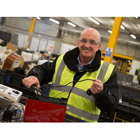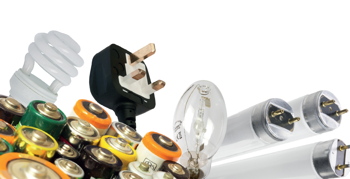Taking care of your waste management

Within the building services industry, awareness of, and compliance with the WEEE (Waste Electrical and Electronic Equipment) Directive is crucial. Many companies deal with their electrical waste effectively, however, there are still a significant number who are either unaware of their obligation, or fail to comply with the law. Shaun Donaghey of Electrical Waste explains the key issues for effective and compliant WEEE management.
A lot of attention is given to what goes into a building — but what about the equipment that we take out? An efficient building energy management system, for example, is crucial in creating a more sustainable building, but equally essential is ensuring that you are dealing with your electrical and electronic waste in a compliant manner — and that means having a clear strategy in place.
The WEEE Directive (waste electrical and electronic equipment) typically covers everything that requires a plug or battery as well as fluorescent lamps and tubes, high-intensity discharge lamps, compact fluorescent lamps and LED lamps and tubes. The 2013 WEEE Directive requires this waste to be properly stored, handled, disposed of and documented in an effort to reduce contamination and landfill. Failure to do so can result in substantial fines and even imprisonment.
According to statistics from the ESA (Environmental Services Association), an estimated two million tonnes of WEEE is discarded in the UK every year. The same study identified that over two-thirds of electrical waste is currently unaccounted for and waste crime is costing the UK economy £538 million pounds per annum.
This presents a real challenge, and if you take into account the fact that, according to a report from the UNU (United Nations University), the UK is the world’s fifth largest producer of WEEE with a total of 23 kg per inhabitant generated in 2014 alone, you can see that the problem is only going to get worse.
A vast amount of the industry’s discarded waste is toxic and can have a long-term impact on the environment and human health. For example, a single fluorescent tube can contaminate 32 000 l of drinking water. What is needed, therefore, is for the industry to manage its waste correctly; the only way to do this is by understanding the current legislation, the differences between the Duty of Care regulations and the WEEE Directive and then setting out a clear strategy for waste management.
The WEEE Directive and the Duty of Care regulations are two separate legal requirements that work alongside each other when it comes to waste management.
The 2013 WEEE Directive is a statutory provision which states that any dangerous or toxic electrical equipment should be stored, transported, and disposed of in a compliant manner. This means that industry professionals must ensure that all of their electrical and electronic equipment is stored in separate waterproof containers for each type of WEEE — both on-site and during transportation. The WEEE legislation also requires anyone who is moving any electrical waste to carry all official documentation together with a Waste Transfer Licence during the transportation.
The Duty of Care regulations make a provision for the safe management of waste to protect the environment and, unlike the WEEE Directive, applies to every business that produces any waste, placing the onus on them to audit the company handling their waste.
Both regulations outline the importance of choosing an appropriate supplier to handle your electrical and electronic equipment waste and specifies that those who fail to comply with the legal requirement will face unlimited fines and possible imprisonment.

Since the legislation was introduced, the Environment Agency has brought hundreds of prosecutions against businesses and individuals for illegal waste activities and imposed millions of pounds worth of fines. In 2015 alone, 54 businesses were prosecuted with fines totalling over £700 000.
In one case, a company from Ipswich was left with a bill for £14 000 after waste which was removed during a refurbishment project was found dumped nearby. The company failed to carry out the necessary checks on their waste carrier, which dumped the waste in a quiet rural area; as a result the company received a hefty fine.
Finding a solution to effective waste management is therefore crucial, and one of the ways building services professionals can achieve this is by creating a clear strategy for WEEE management which involves using a reputable supplier.
When it comes to WEEE, there are essentially only two choices.
• You can address the issue properly and engage with reputable suppliers which can provide full protection for you and your business
• You can take a chance — knowing that every item of WEEE that you discard in this way could land you a hefty fine or even imprisonment.
Compliance, however, can be easily achieved, once you are aware of the requirement. To find out more about how to comply, simply visit the first link below or call 01388 721000 and let Electrical Waste do the rest.
Shaun Donaghey is group operations director at Electrical Waste.







